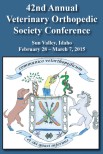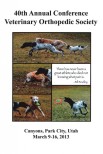Objectives The objectives of this study were to evaluate the population, concurrent injuries, best diagnostic radiographic projection, management and short-term outcome of cats presenting with a fracture of the greater trochanter.
Methods Medical records, imaging studies, methods of repair, complications and short-term outcome of cats that presented with a fracture of the greater trochanter were retrospectively reviewed at two referral institutions. Radiographs were evaluated using a quantitative scoring system. Short-term outcome (>3-6 months) and complications were determined at the follow-up appointment.
Results Seventeen cats were included. The mean age was 10.5 months (range 3-16). All 17 cats exhibited concurrent orthopaedic injuries, with 5/17 (29%) presenting with multiple orthopaedic injuries. Coxofemoral luxation was the most common, representing more than half (58.8%) of the concurrent orthopaedic injuries identified, followed by pelvic/sacral fractures (52.9%). Further orthopaedic injuries such as sacroiliac luxation and femoral neck fractures were the least common and were present in 11.7% of the studied population. Greater trochanteric fractures were most easily identified on the ventrodorsal radiographic projection of the pelvis, with increased accuracy in the frog-leg ventrodorsal view. Most cats (94.4%) were managed surgically using two or three Kirschner (K)-wires and a tension band wire. Short-term follow-up was available for all 17 cats at a mean of 6.3 months (range 3-8). Major complications were seen in 4/17 (23.5%) patients. These included mild lameness and persistent discomfort due to periosteal reaction, which resolved following surgical or medical intervention. Short-term mobility was considered good in 58.8% of cats, acceptable in 29.5% and poor in the remaining 11.7%.
Conclusions and relevance Coxofemoral luxation was the most prevalent concurrent orthopaedic injury (58.8%). The majority of the greater trochanteric fractures (94.4%) were managed surgically with K-wires and a tension band wire. Ventrodorsal and specifically frog-leg radiographic projections of the pelvis enhance the diagnosis of greater trochanteric fractures. Specific outcomes of greater trochanteric fractures are uncertain because of the high occurrence of concurrent orthopaedic injuries.









